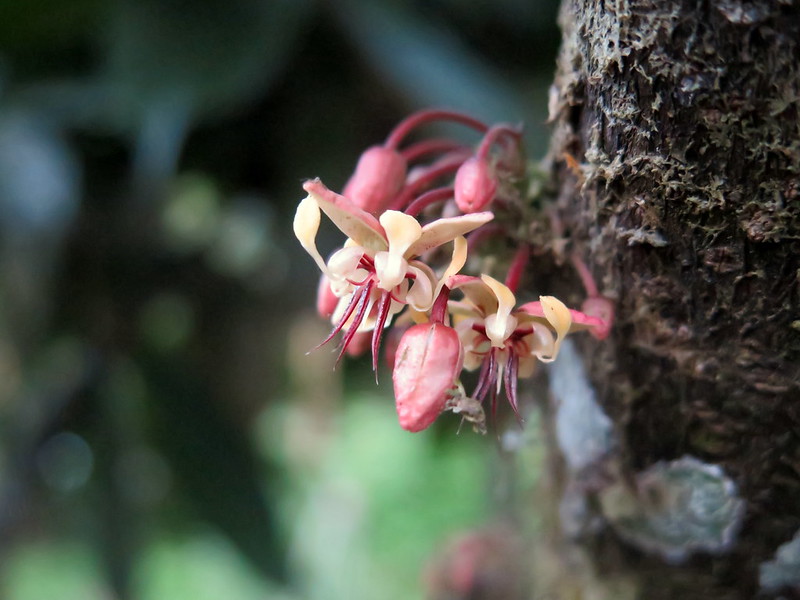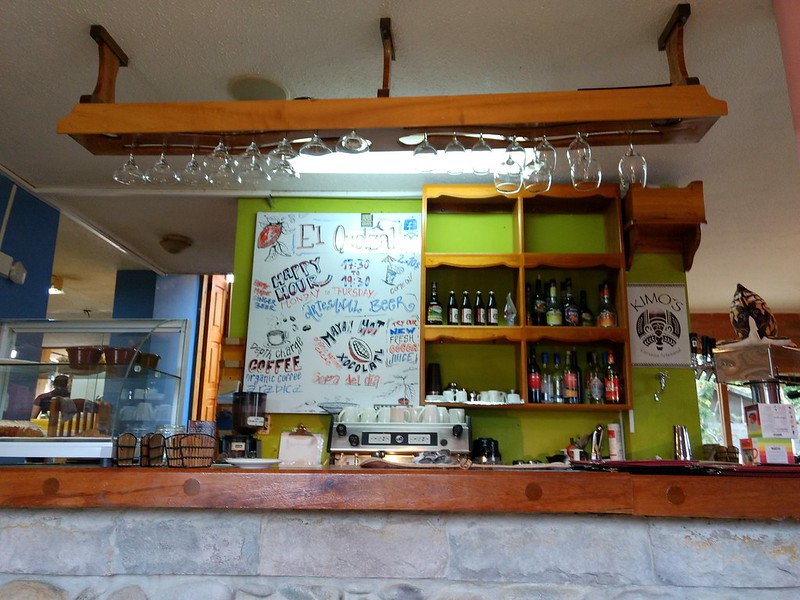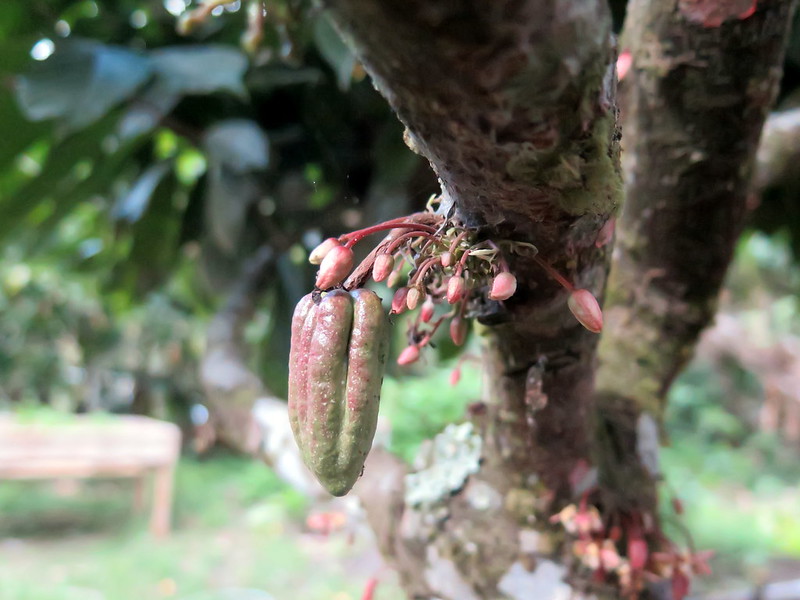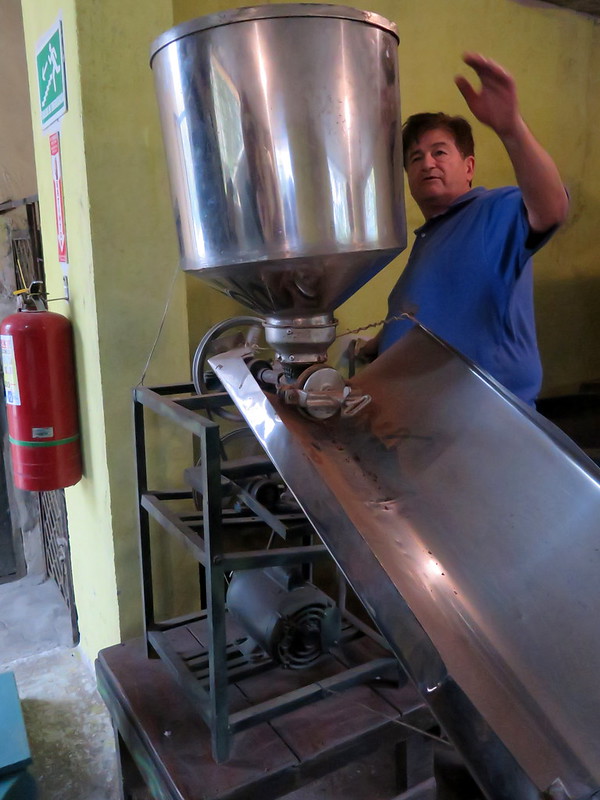
You already know I love chocolate so much that I carried a DIY bean-to-bar chocolate-making project across three countries. Continuing this obsession, we we’ve been on the lookout since the start of our trip for a tour of a cacao plantation and the full chocolate-making process. Mindo Chocolate’s El Quetzal was the perfect opportunity to see small scale bean-to-bar chocolate creation in action, so during our day trip to Mindo we stopped by to take a tour.
El Quetzal serves as a storefront, café, and tour center for Mindo’s chocolate-making. You can go in and shop around while waiting for a tour to begin (they occur every half-hour as of Dec 2016), or you can grab a cacao-themed snack at the café. These include the standard fare of brownies and chocolate cake, but what you should really order is the cacao fruit smoothie – it’s a rare chance to taste cacao fruit, that sweet pineapple-mango flavored delight that surrounds each cacao bean and is lost in chocolate-making.

The tour begins with a walk through the plantation behind the restaurant to demonstrate growing, harvesting, fermenting, and drying the cacao beans. While the bulk of Mindo’s beans are grown elsewhere, several cacao trees flourish on the Mindo plantation. The guide explains cacao’s growing conditions in hot humid environments and describes the Nacional and Criollo strains they use in their chocolate-making. The trees at the plantation display cacao pods in all states of development, from flower to full-size pod, which all sprout from the trunks of the trees in a natural phenomena known as cauliflory.

The next stop is an open greenhouse to see how cacao is fermented and dried. El Quetzal ferments its beans primarily on the main plantations, but the guide shows you the type of boxes and layering with banana leaves that occurs to keep the cacao at the perfect temperature during the two-day fermentation. They then show you the beans drying on mesh nets in the greenhouse—cracking one open reveals a nearly rich brown cacao nib, even before the roast. There’s hardly a trace of the original purple color found in cacao nibs before fermentation.

After learning growth and preparation of the bean, the guide walks you through the roasting and extraction of the cacao nib. El Quetzal has built much of its own chocolate-making equipment, including a rotating drum for roasting the cacao beans at a low temperature and a device that cracks the beans and separates them from the outer husk.

Then it’s on to grinding and processing, where El Quetzal uses several ball mills to grind the cacao from the nibs into a smooth, dark chocolate liqueur. The liqueur is then further processed by a press that squeezes out the cacao butter, leaving behind the cocoa powder that we use in baking. Or the cacao liqueur is conched and mixed with cacao butter to make chocolate. All of this takes places in a heated room to keep the chocolate liquid and encourage formation of the shine that we’re used to in fine chocolate. Once poured into molds, the chocolate is moved to a cold room to set and mature for three days.

Finally, it’s back to the café for the tasting flight of El Quetzal’s chocolates. It begins with the pure cacao liqueur served beside a homemade brownie, followed by 85%, 77% and 67% dark chocolate bars, both plain and with added flavors. Their chocolate is citrusy and tangy, pairing well with ginger and nuts. You wash the chocolate down with a sampling of cacao tea, made from the cacao husks after the nib is extracted.

While wonderful, the tour and chocolate purchases were definitely a splurge for us. The chocolate-making tour is $10 per person (in 2016), which is the cost of about 2 meals for us in Quito. Chocolate bars are also on the pricier side, at $7 for a 50 g bar. But with their award-winning 77% bar and the amazing blend of the 67% chocolate and ginger bar, it’s hard to resist. And because it’s a mom-and-pop operation built from scratch, it couldn’t feel better.

Natalie,
What a great blog post about our business. Thanks for getting the word out about what we do and for coming to our chocolate tour in Mindo.
Barbara
LikeLike
You’re welcome! We loved the chocolate (especially the ginger chocolate bar) and hope you keep up the great work!
LikeLike